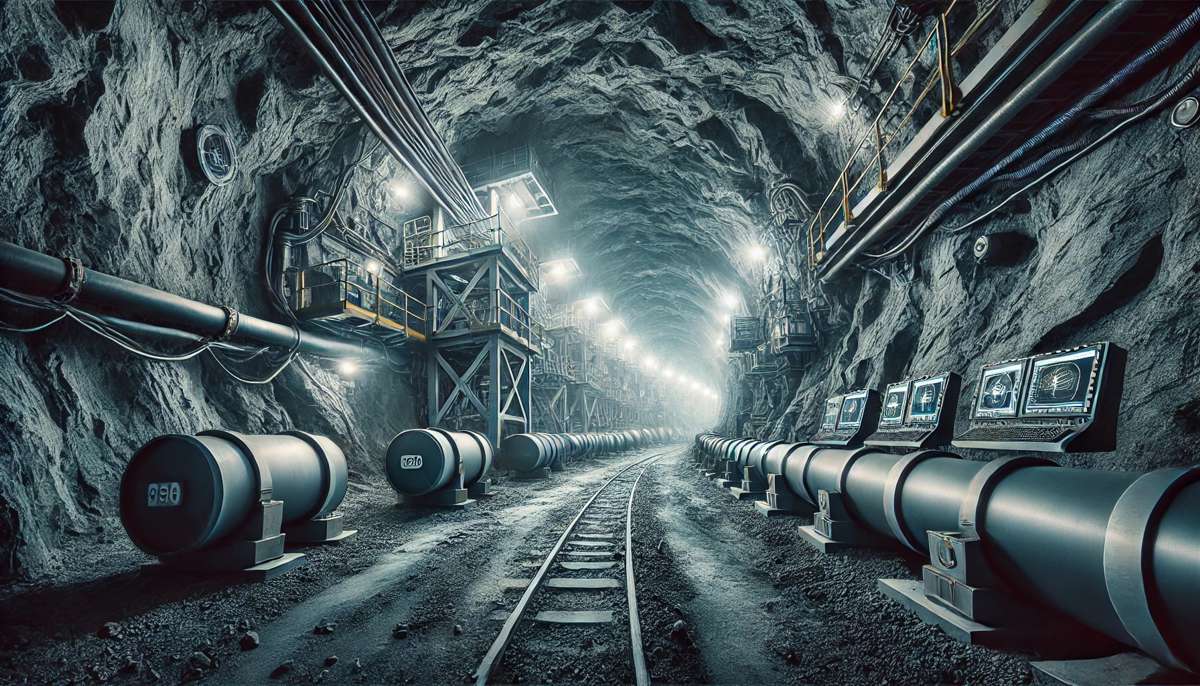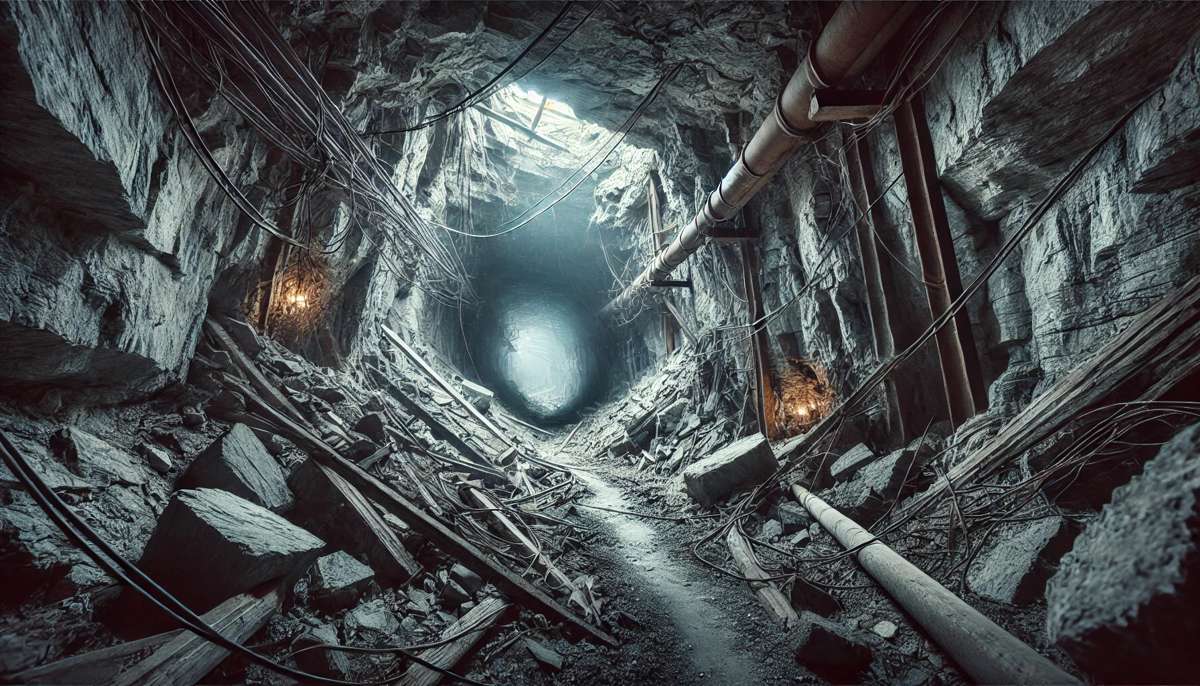Effective Control and Mitigation Strategies for Deep Mining Rockburst Risks
Mining, a keystone of modern civilisation, powers countless industries and technological advancements. Yet, as shallow resources wane, mining operations are being forced to delve deeper into the Earth’s crust—territory that’s as challenging as it is promising.
One of the biggest concerns in deep mining is the rockburst phenomenon, a sudden and violent release of accumulated strain energy within rock masses. These seismic events pose serious risks to miners and can wreak havoc on underground structures.
In recent research published in the KeAi journal Deep Resources Engineering, Dr. Ming Cai of Laurentian University in Canada introduces an innovative approach to rockburst risk management, shedding light on factors that influence rockbursts, as well as practical control and mitigation strategies. The study emphasises a multi-tiered defence against rockbursts, using a blend of technology, engineering, and safety measures.
So, what does this study mean for mining professionals, policymakers, and investors eyeing deep-mining projects? Let’s dive into the key insights.
Understanding the Risks of Rockbursts in Deep Mining
As mines deepen, the geological stress on rock formations intensifies, increasing the likelihood of rockbursts. These sudden, energy-packed events can lead to unpredictable explosions of rock, threatening worker safety and compromising the structural stability of mining infrastructure.
Dr. Cai’s research clarifies the trifecta of risk factors involved: the inherent rockburst hazard, excavation vulnerability, and exposure to potential events. He explains: “Rockburst risks stem from a combination of the rockburst hazard, excavation vulnerability, and exposure. Risk control needs to focus on these three aspects.” By addressing these factors, mining operations can implement proactive safety measures to reduce the probability and impact of rockbursts.
Ground Support Systems and Their Critical Role
A cornerstone of rockburst control lies in strengthening the resilience of mining excavations through effective ground support systems. These systems, which are designed to reinforce mine openings, help to distribute stress and minimise damage in the event of a rockburst.
Cai advocates for the use of robust support structures as an essential step in rockburst management. He shares a stark but practical outlook: “Even if we can predict rockbursts, so what? If we do not support the drifts and stopes well against rockburst damage, severe damage to mine openings might lead to disruption of mining operations.”
In the worst-case scenario, such disruptions could even lead to mine closures. By fortifying critical areas with rockburst-resistant support systems, mines can better weather these seismic events.

The Multi-Layered Defence Strategy
In his study, Dr. Cai emphasises a layered approach to rockburst risk management, describing it as a “multiple-line defence system.” This strategy employs several stages of control, each designed to address rockburst risks from a different angle.
- Improved Mine Design and Mining Sequencing: The initial line of defence is to minimise the rockburst hazard itself. By adopting better mine designs and planning sequences that spread out the stress, miners can reduce the likelihood of triggering a rockburst.
- Microseismic Monitoring: As a second line of defence, microseismic monitoring plays a vital role. These systems can track seismic activity in real time, providing early warnings that allow miners to take preventive action before a rockburst occurs.
- Rockburst-Resistant Support: The third and final line of defence focuses on reducing excavation vulnerability. Support systems specifically designed to withstand rockbursts can be installed in areas most at risk, offering additional protection against structural damage.
By applying these layered measures, mining operations can significantly reduce the risks posed by rockbursts, ensuring safer working conditions and greater operational stability.
Predicting Rockbursts: What’s Possible and What’s Not
While predicting rockbursts has become more feasible with advancements in seismic monitoring, the process still presents limitations. Dr. Cai points out that even with precise predictions, the potential for disruption remains. “Assuming that we correctly predict a rockburst’s occurrence time, location, and magnitude, we can then evacuate workers from the mining area in a timely fashion,” he notes. “However, if we do not support the drifts and stopes well against rockburst damage, severe damage to mine openings might lead to disruption of mining operations.”
In other words, prediction without preventive support systems is not a viable solution. The unpredictability of rockbursts underscores the need for a comprehensive approach—one that combines monitoring and predictive technology with practical engineering solutions.
Advanced Monitoring Technologies: The Future of Rockburst Management
Technological innovation is transforming the way mines address safety risks. Modern deep-mining operations increasingly rely on advanced monitoring tools that provide real-time data on seismic activity. These technologies allow operators to assess risk continuously, making quick adjustments to mitigate hazards before they escalate.
However, even with sophisticated equipment, human expertise remains essential. According to Dr. Cai, integrating engineering judgement with data from monitoring systems can greatly enhance decision-making, especially when evaluating whether to evacuate areas or adjust mining schedules. This blend of technology and experience represents a proactive approach that can significantly reduce the likelihood of major incidents.

Administrative Measures and Safety Protocols
Beyond technological and engineering solutions, administrative measures also play a pivotal role in managing rockburst risks. Well-defined safety protocols, regular training sessions, and clear communication channels ensure that miners understand the risks and know how to respond in emergency situations.
Many leading mining companies now include rockburst-specific safety training as part of their regular worker education programs. These initiatives prepare miners for emergency scenarios and emphasise the importance of swift evacuation and adherence to established safety procedures.
By reinforcing administrative measures alongside engineering controls, mines can create a culture of safety that prioritises worker wellbeing.
A Comprehensive Approach to Deep Mining Safety
Dr. Cai’s research is a call to action for a more comprehensive approach to safety in deep mining. The study presents a multi-faceted approach, combining traditional engineering controls with cutting-edge technology and robust administrative measures. “We want the workers to be safe no matter what; we also want the investment to be safe,” Cai asserts, underscoring the dual objectives of protecting both human lives and financial interests.
As mining ventures continue to push further underground, the need for rockburst control strategies will only become more urgent. The methods detailed in this research provide a blueprint for mitigating risks, safeguarding personnel, and ensuring the longevity of mining operations. By adopting these strategies, companies can reduce the likelihood of severe rockburst incidents, creating a safer environment for everyone involved.
Securing a Safer Future in Deep Mining
While rockbursts remain a formidable challenge in the mining industry, the solutions are within reach. By building on the foundations of Dr. Cai’s research, mining professionals and policymakers alike can drive innovation in safety practices.
This multi-tiered approach to risk management—combining engineering, technology, and proactive safety measures—stands as a promising solution to one of mining’s greatest challenges.



















